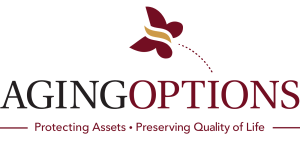So, you’ve finally retired. Congratulations – this day has been decades in the making! Now that your last day at the office, on the shop floor, or in the classroom is finally here, we have just one question: what do you want to do about your 401(k)?
As recently as 2023, more than 71 million American workers had access to a 401(k) retirement account through their workplace. Vanguard reports that the average balance in these accounts is well over $148,000, a figure which rises considerably as a worker ages. While many will retire with relatively meager savings (as we discussed in this recent Blog article), it’s certainly not unusual for a diligent saver to retire with $500,000 or even $1 million saved – or more.
For those retirees with significant 401(k) balances, the decision about what to do with your funds upon retirement has been a binary choice: either roll the balance over into a new IRA or let the money remain within your ex-company’s fund. But how do you decide? In this recent article from Morningstar, Christine Benz, Morningstar’s director of personal finance and retirement planning, gives us six simple questions that will help guide your thinking.
Some of her reasons contain a few surprises, so let’s take a look and see whether Benz’s questions hit the mark.
Rollovers Have Been “a Foregone Conclusion” Until Recently
“For many employees,” Benz writes, “what to do with a 401(k) plan at retirement has been a foregone conclusion: Roll it over. Financial advisors no doubt have reinforced that trend, with rollovers from 401(k)s to IRAs bringing a juicy source of advisor revenue year after year.”
However, she goes on, for a variety of reasons that slam-dunk choice is changing. The trend toward abandoning the company’s retirement account in favor of one’s own may be reversing.
“Forty-two percent of defined-contribution plan participants remained in their plan three years after retirement, according to a study from J.P. Morgan,” says Benz – more than double the percentage from just a decade earlier. “A recent Pew survey identified a similar trend, with 35 percent of near-retirees saying that they planned to keep their assets in the plan following retirement.” The reasons include quality of investment options, low fees, and convenience.
Companies Are Encouraging Retirees to Let the Money Be
According to Morningstar, firms are starting to see the benefit of having retirees leave their dollars in the company account. That’s because bigger fund balances typically reduce costs. Now, those defined-contribution plan advisors are stepping up.
“In a 2021 Pimco survey of retirement plan consultants and advisors,” Benz notes, “36 percent of firms said they were actively encouraging participants to stay put in their plans following retirement. That was a dramatic increase from 2015, when just 14 percent of the firms in Pimco’s survey said they were actively attempting to get participants to stay behind.”
While Benz acknowledges that many factors go into the decision of whether to “stay” or “go” with retirement funds, in her view the choice boils down to six key questions. “If you’re pondering whether to leave the assets behind or roll them over for retirement,” she writes, “here are the key questions to ask, listed in order of importance.”
Question #1: Does Your Firm Offer a High-Quality Plan?
“This is the key question when deciding whether to leave assets in a plan or roll them over,” Benz asserts.
As she goes on to explain, a high-quality plan will score well on three key metrics: the quality and breadth of the investment lineup, the investment fees it charges for the fund options in the plan, and any administrative fees that the plan levies on its participants. (Benz adds that Morningstar, among other sources, offers ratings and data to help investors assess the various options available in their plan.)
One more recent change in the investment landscape lies in the area of low-fee funds. These were “a big selling point for some 401(k) plans in the past,” says Benz – but today individuals can buy into index funds and other ultra-low-cost options for their IRAs without having to stay in the large corporate fund.
Evaluating Quality Also Includes Gauging Investment Variety
Benz is quick to add that “quality” of a fund means more than “low cost,” especially if your 401(k) will be the cornerstone of your retirement income.
She writes, “Be sure to pay close attention to the types of investments on offer, too, especially if the 401(k) will be your main or sole account for retirement. Investment types like short-term bonds, Treasury Inflation-Protected Securities, and cash surrogates like stable-value funds are apt to play a bigger role in your in-retirement portfolio than they did in your accumulation years.”
Speaking of fees, Benz includes a detailed discussion of ways to measure the overhead that accompanies your investment, either with your former firm or on your own. We’ve had to skip that due to space constraints – please check out her original article for specifics.
Question #2: Do You Anticipate Needing Early Access to Your Funds?
The question of how soon you expect to need access to your money is important, Benz writes.
“If you’re a young retiree and need access to your money before the age of 59 ½, staying put in the 401(k) plan may be the most practical course,” she recommends, “even if the 401(k) isn’t all that great. That’s because investors in 401(k) plans who have left their employers can tap their assets a touch earlier without penalty—at age 55—versus age 59 ½ for IRA investors.”
But, she reminds us, early access comes with major caution flags. Early withdrawals will dramatically affect your portfolio’s long-run sustainability. “Also,” Benz adds, “some 401(k) plans don’t allow the age 55 withdrawal option. In instances when the 401(k) is truly poor, you could leave the funds behind for withdrawals up until age 59 ½, then roll the assets into an IRA after that.”
Question #3: How Flexible are the Rules Regarding Withdrawals?
“Another key issue—and one that tends to be quite underdiscussed—is how much flexibility the 401(k) participant has over withdrawals,” Benz notes.
The issue comes down to whether withdrawals can be taken from your choice of any of the investment choices in your 401(k) or whether they have to be taken proportionately from all the holdings in the account. “That lack of flexibility can be a major disadvantage for retirees who would like to use their withdrawals to help keep their asset allocations in line with their targets on an ongoing basis,” Benz writes.
By contrast, IRA withdrawals generally offer more flexibility, Benz explains, “giving retirees more latitude to manage withdrawals in a way that aligns with portfolio strategy. If retirees were taking a buy-and-hold approach and using rebalancing proceeds to create cash flows, for example, they’d be able to pull withdrawals exclusively from bonds and cash when their equity holdings are in the dumps; they’d extract money from equities only after robust stock market rallies.”
In a similar vein, Benz adds, some corporate plans that offer both traditional and Roth options might require withdrawals to come from both account types proportionately. This complicates a tax-efficient sequencing of withdrawals.
Question #4: How Important is Protection from Creditors?
This is one factor that may be highly important – and also highly personal.
“Legal protections are another reason to consider staying put in an old 401(k),” says Benz. “Although laws regarding creditor protections for retirement assets vary by state, company retirement plan assets generally have better protections from creditors and lawsuits than do IRA assets.”
If you’ve had credit or bankruptcy problems, she notes, or if you have worked in a profession that invites the possibility of a future lawsuit, this protection could be a reason to leave the funds where they are.
Question #5: Is Your Fund Heavy with Employer Stock?
If the company from which you’re retiring has its own stock in your 401(k), says Benz, “staying put is often a better bet than rolling the money over.” The reason has to do with exposure to capital gains tax versus income tax on future withdrawals.
“If you have company stock in a company retirement plan, you’ll pay capital gains tax on any appreciation over and above your cost basis when you sell the shares,” she explains. “That differential is called net unrealized appreciation.”
By contrast, If you roll over the company stock into an IRA, “you’ll pay ordinary income tax on the distributions,” Benz notes. Your tax exposure could be significantly higher. This is definitely a situation where you’ll want to consult a tax or financial advisor.
Question #6: Do You Need “Guardrails” to Keep Funds Intact?
Benz ends her article on a personal note, one requiring some honest self-assessment. Are you the kind of investor prone to reckless or risky choices? If so, your company fund is more likely to protect you from yourself.
“Finally,” she writes, “a little bit of introspection is in order. Keeping the money in a 401(k) plan provides at least a few safeguards that aren’t there with an IRA. After all, these plans are overseen by fiduciaries that are legally required to look out for participants’ interests, so the funds in the lineup tend to be well-diversified and vanilla—not the type of investments that usually blow up portfolios.”
But she’s quick to note that a disciplined investor can certainly “emulate the simplicity and sensible approach of a 401(k)” by themselves. There are plenty of models out there to guide you. Still, however, good financial advice is essential.
A Financial Dashboard is a Key Tool to Combat Uncertainty
So, how do you choose? In today’s climate of uncertainty, one tool that we’ve recommended repeatedly is what Rajiv Nagaich and Saket Sengar call a financial dashboard.
“Whether it’s budgeting, investment advice, retirement planning or tax strategies,” Rajiv says, “you need a financial planner who is a a good fit for you, personality and professionally. Just make sure he or she understands the power of a financial dashboard.”
The concept is fairly simple, Rajiv explains. “Your financial planner will help you create the dashboard. Then you’ll have the ability to take a long-term view of your finances while allowing you to look at a wide range of ‘what-if’ scenarios to account for unforeseen circumstances – things you can’t predict today. What will tomorrow’s inflation rate be? How much will Social Security pay you and your spouse? What if you retire early or get laid off? Your financial dashboard will boost your confidence because it lets you see how your plans will be affected down the line.”
We urge you to contact us for more information on this essential planning tool.
Rajiv Nagaich – Your Retirement Planning Coach and Guide
The long-awaited book by Rajiv Nagaich, called Your Retirement: Dream or Disaster, has been released and is now available to the public. Retirement: Dream or Disaster joins Rajiv’s ground-breaking DVD series and workbook, Master Your Future, as a powerful planning tool in your retirement toolbox. As a friend of AgingOptions, we know you’ll want to get your copy and spread the word.
You’ve heard Rajiv say it repeatedly: 70 percent of retirement plans will fail. If you know someone whose retirement turned into a nightmare when they were forced into a nursing home, went broke paying for care, or became a burden to their families – and you want to make sure it doesn’t happen to you – then this book is must-read.
Through stories, examples, and personal insights, Rajiv takes us along on his journey of expanding awareness about a problem that few are willing to talk about, yet it’s one that results in millions of Americans sleepwalking their way into their worst nightmares about aging. Rajiv lays bare the shortcomings of traditional retirement planning advice, exposes the biases many professionals have about what is best for older adults, and much more.
Rajiv then offers a solution: LifePlanning, his groundbreaking approach to retirement planning. Rajiv explains the essential planning steps and, most importantly, how to develop the framework for these elements to work in concert toward your most deeply held retirement goals.
Your retirement can be the exciting and fulfilling life you’ve always wanted it to be. Start by reading and sharing Rajiv’s important message. And remember, Age On, everyone!
(originally reported at https://morningstar.com)


